Liferay DXP 7.4 is yet another exciting release with a number of new features and more being added all the time because of the rolling release model. Before I dive into my favorite new features in Liferay DXP 7.4, I should call out that the rolling release model means that Liferay DXP 7.4 will be a long-living release with many GA updates into the foreseeable future. If you are not yet on Liferay DXP 7.4, you should consider upgrading to 7.4 at the earliest possible opportunity.
Top New Liferay DXP 7.4 Features
- Front-end Client Extensions (aka Remote Apps)
- “Free” Availability of Liferay Enterprise Search Apps
- Liferay Objects—A New Low-Code Approach!
- Displaying Content Collections Just Got Better!
- DocuSign Integration For Digital Signatures
- Account Management Widget
- Site Navigation Just Got More Powerful!
- Expiration Dates For Documents And Media, Finally!
- Collaborative Publications
- Related Items Providers
- Page Audit For Page Optimization
- Automated Translations And More
- Collection Providers Are Now Reusable!
Liferay DXP 7.4 Feature #1: Front-end Client Extensions (aka Remote Apps)
One of the most exciting new features of Liferay DXP 7.4, from my perspective, is an architectural feature—the addition of “front-end client extensions” (previously known as “remote apps”), which allow for seamless integration with external systems and applications.
Front-end client extensions come in many different flavors—JavaScript, CSS, Theme CSS, Theme JS, Theme Favicon, Custom Element, and IFrame.
While I think all of these extensions are very interesting for Liferay Architects and Developers, I will focus here on JavaScript Client Extensions.
JavaScript Client Extensions (or Remote Apps) are a new type of Liferay app that can be deployed and managed independently of the Liferay portal. These apps are built using standard web technologies such as HTML, CSS, and JavaScript, and can be hosted on any server or platform that supports them.
The key benefit of remote apps is that they enable Liferay to easily integrate with external systems and applications, without requiring developers to modify or customize the Liferay platform itself. As you can imagine, this makes your Liferay DXP 7.4 updates easier, as there are fewer chances of something going wrong.
Important Note: front-end client extensions are only available in Liferay DXP 7.4 U45+.
Liferay DXP 7.4 Feature #2: Free Availability of Liferay Enterprise Search Apps
Liferay Enterprise Search (LES) applications are now included in all Liferay DXP 7.4 bundles and Docker containers. LES is enabled by default, and no additional installation or activation steps are required to get started. However, to access official Liferay Support and additional benefits, organizations must purchase an LES add-on subscription. Maintenance and updates for LES applications are also delivered through Liferay DXP updates, making administration easier.
While Liferay Enterprise Search has multiple apps, my favorite is Search Blueprints, which is the first feature in the Search Experiences application.
Blueprints allow you to customize the search page experience to better meet the needs of your users, all without the need for custom code deployment. With Blueprints, you can create search pages that are tailored to specific contexts. For instance, you can give more prominence to Web Content articles that are more relevant to the search user based on proximity. Additionally, you can explicitly specify which fields are included in the search, giving you greater control over the search results.
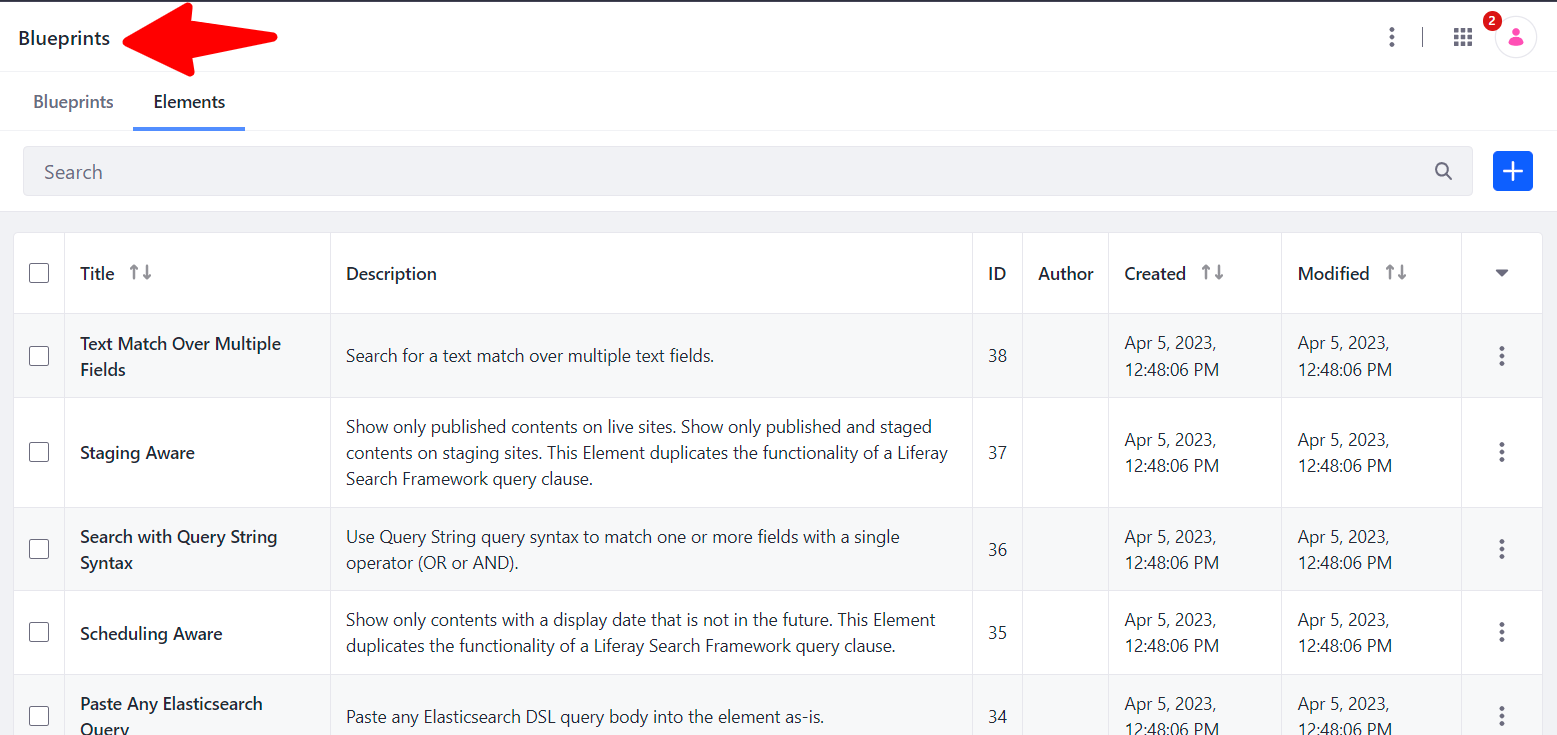
Moreover, Blueprints also enable you to boost assets with a specific category for a designated period. This can be particularly useful for seasonal promotions, where you may want to highlight certain products from Liferay Commerce. Furthermore, any use case that can be addressed by the Custom Filter widget can be handled by Blueprints. For instance, you can boost fields that correspond to the searched keyword to help users find the most relevant content.
Overall, Blueprints offer a flexible and efficient way to enhance the search page experience for your users, without having to resort to custom code deployment. Whether you want to create context-aware search pages or implement specific search filters, Blueprints provide a powerful toolset that can help you achieve your goals quickly and easily.
Liferay DXP 7.4 Feature #3: Liferay Objects—A New Low-Code Approach!
Liferay Objects offer a convenient low-code solution for building and delivering entire business applications without having to deploy code modules to Liferay and without having to write code. For example, you can create an “event registration” app using Liferay Objects, and you can even send new event sign-ups to a third-party (non-Liferay) app or database via the Job Scheduler integration.
Using Liferay Objects, even non-technical users can:
- Create custom business objects through a user-friendly interface
- Easily define the data model, including fields and data types
- Add relationships to other Liferay Objects
- Trigger actions such as notifications or webhooks and
- Create customized layouts and views as needed
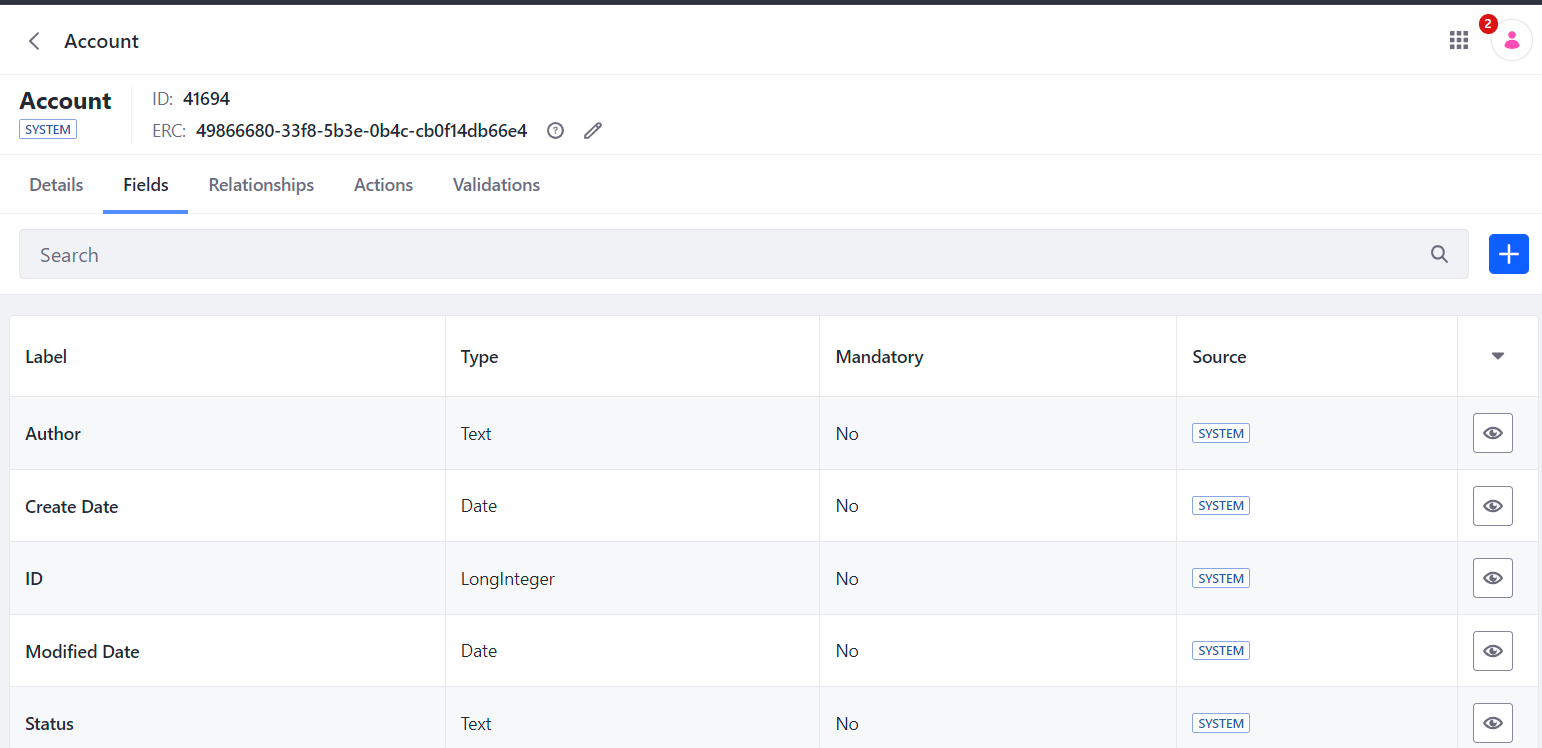
These objects are seamlessly integrated with existing core frameworks within Liferay DXP, such as Asset, Workflow, Permission, Blueprints, and Headless. Once an object is created, its corresponding Headless APIs are automatically generated and can be accessed through Liferay API Explorer. Every Liferay Object is fully integrated with the platform’s Permissions framework, enabling you to allocate permissions for applications and resources, and effectively control access to both the Objects and their entries.
Liferay DXP 7.4 Feature #4: Displaying Content Collections Just Got Better!
In Liferay DXP 7.4, the Collection Display Fragment has been enhanced, and two new fragments, the Collection Filter Fragment and the Applied Filters Fragment have been added to provide site administrators with more flexible and customizable options for displaying collections of content on their website.
As a reminder, the Collection Display Fragment is a drag-and-drop component that allows users to display collections of content, such as press releases, blog posts, or product listings, in a visually appealing and responsive manner.
The Collection Display Fragment now supports filtering, searching, and sorting, to provide end-users with the ability to focus on exactly what is important for them. The Collection Filter Fragment is the Liferay component that allows the user to filter the content displayed in the Collection Display Fragment that is added to the same page. For filtering to work, you need to choose the target Collection in the Collection Filter fragment configuration. Once you have it all set up, end users can either select categories or search for keywords to filter the displayed Collection content. The Applied Filters Fragment goes hand in hand with the Collection Filter Fragment and allows the users to see a list of filters applied with the Filter Fragment.
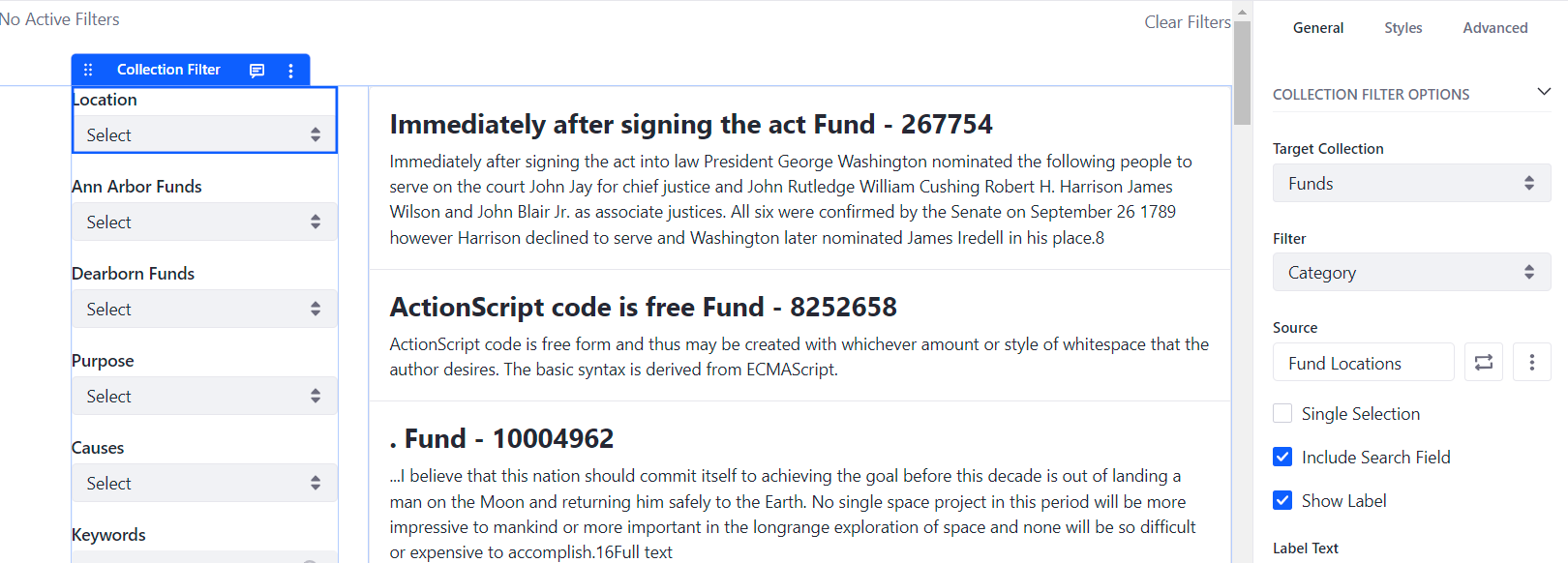
Some other Collection Display Fragment enhancements include the ability to show a gutter (spacing) between columns in grid layout, the ability to vertically align the items in the collection to the top, middle, or bottom of each row, and the ability to paginate the Collection items using the Pagination configuration.
The pagination feature is particularly useful as it makes it easier to show Collections with a large number of items. Rather than displaying all items in the Collection at once, it is possible to specify the number of items to show at a time and enable users to navigate through the list of items. By breaking down the visible list of items into smaller groups, the server overhead is reduced, which in turn improves the server response time and overall user experience.
Liferay DXP 7.4 Feature #5: DocuSign Integration For Digital Signatures
Liferay now offers a DocuSign integration that allows you to streamline any business process requiring digital signatures if DocuSign is the eSignatures tool of choice for your organization (requires a DocuSign subscription). You can enable this integration under Liferay’s Instance Settings, where you will need to configure the information needed for Liferay to integrate with DocuSign—User ID key, API Account key, Account Base URI, Integration key, and RSA Private key.
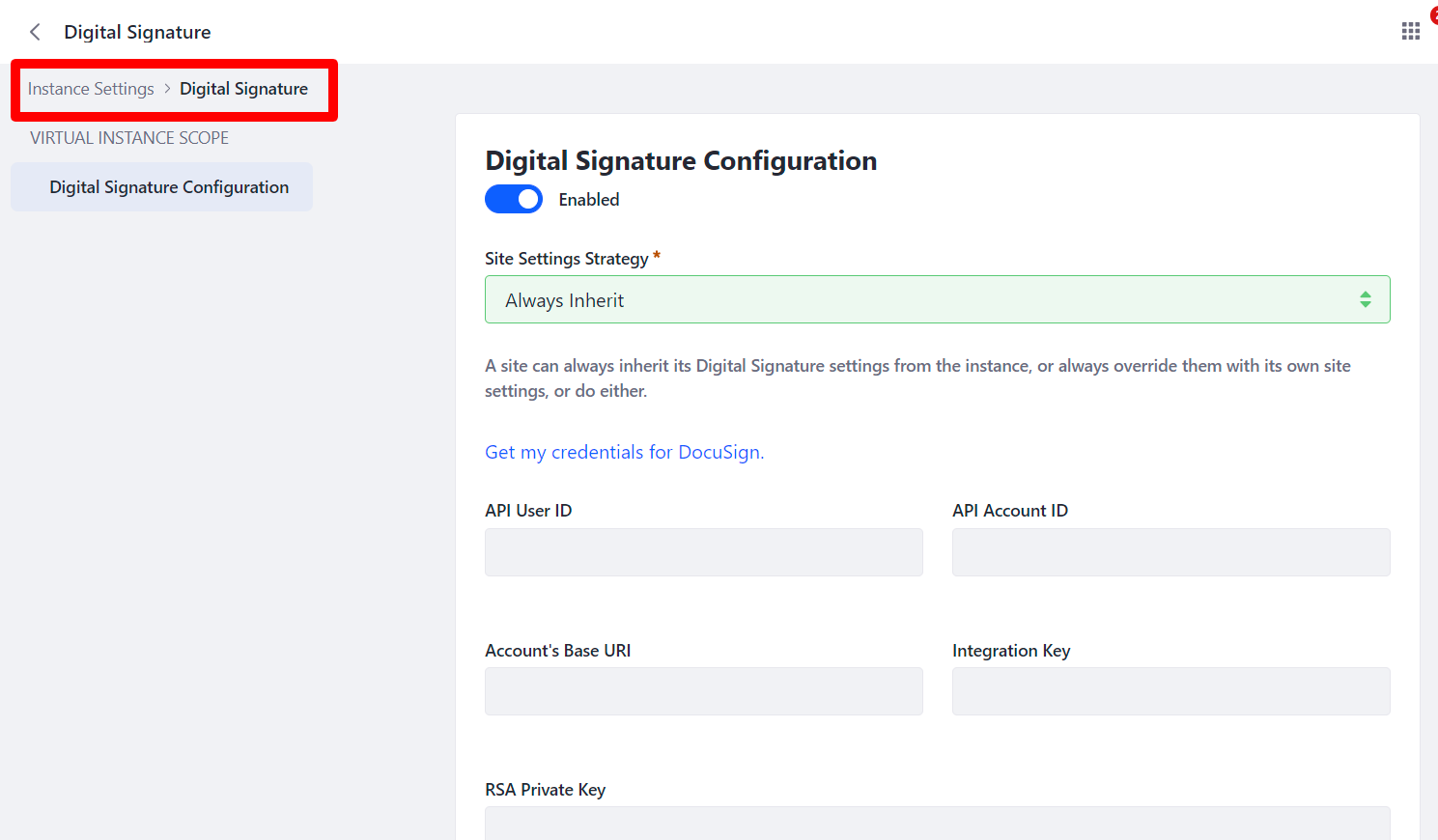
Once you have it all set up, you can manage and collect signatures on your documents. This feature enables users to send Digital Signature Envelopes with documents to DocuSign from Documents and Media and the Digital Signature module in the Control Panel. Users can view previously sent Digital Signature Envelopes to see their status and download signed documents.
Liferay DXP 7.4 Feature #6: Account Management Widget
With the new Account Management widget in Liferay DXP 7.4, it becomes easy for authorized users to manage and access account information. You can deploy this widget on any page, which is a convenient way to provide account access to those who don’t have permission to view the Control Panel. The Account management widget displays a list of different Accounts, and the accounts displayed are limited by the current User’s access permissions. Authorized Account Users can view and manage their company’s information, such as details, addresses, assigned users, associated organizations, groups, and roles, without having to leave their website. This feature also helps to reduce the burden on Portal administrators for administering accounts and enables self-service.
Liferay DXP 7.4 Feature #7: Site Navigation Just Got More Powerful!
Liferay DXP 7.4 introduces a number of new capabilities related to Site Navigation that make it possible to create sophisticated navigation systems for content-rich websites. One new feature in the Site Navigation space is the Menu Display Fragment that allows you to display two kinds of page hierarchies:
- Site Navigation Menus or menus that you define using the Liferay DXP Navigation Menu for Site Navigation
- Contextual Menus that display a menu based on the current Page context, as the name would suggest! For example, a contextual menu may display only the child pages of the current page or the current page and its siblings, or the current page’s parent and its siblings.
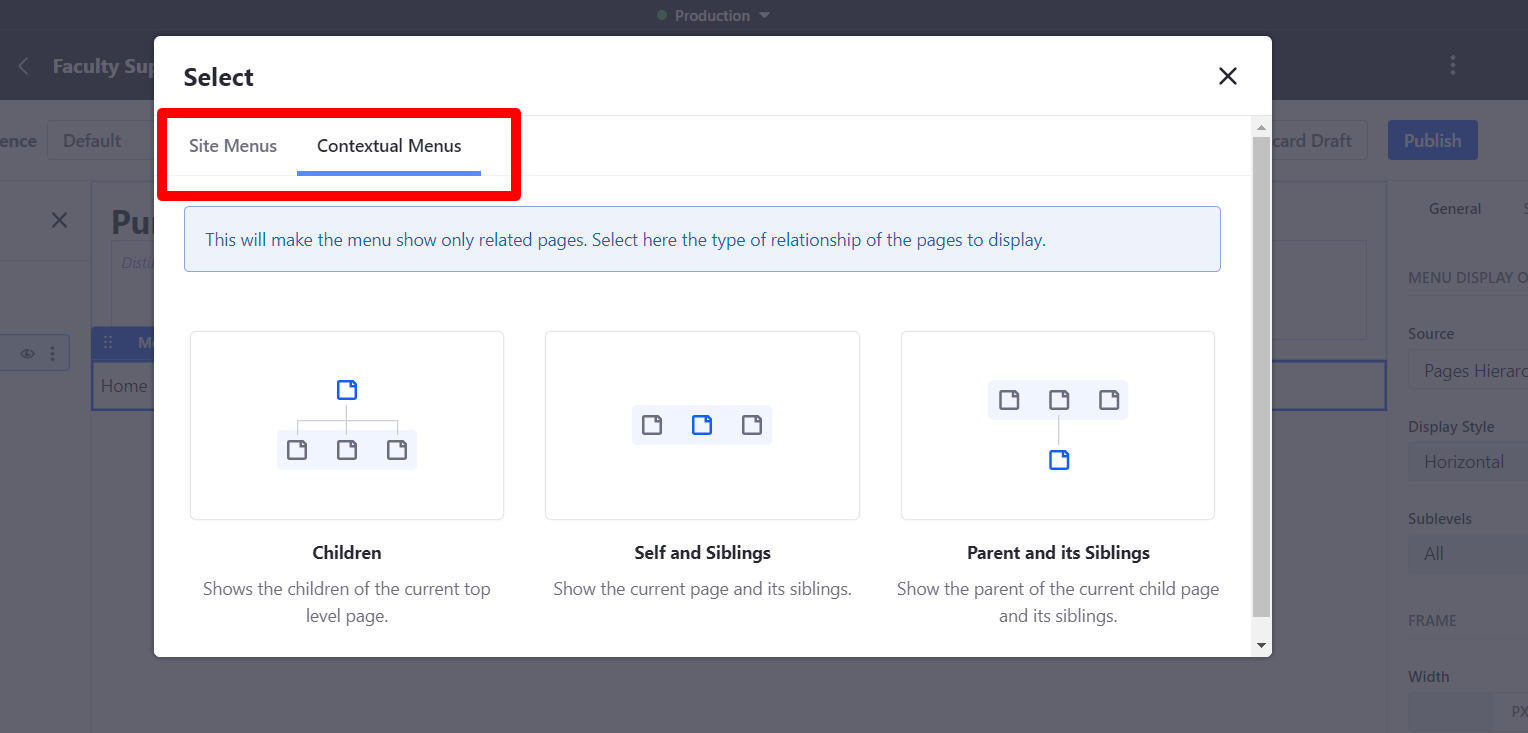
Another new Liferay DXP 7.4 feature (since U26) in the Site Navigation space is that you can use entire Vocabularies as menu elements, thereby making the menu dynamic as categories are added/removed/renamed in the corresponding Vocabulary.
Liferay DXP 7.4 Feature #8: Expiration Dates For Documents And Media, Finally!
While Web Content has long supported the concept of expiration and review dates, Documents and Media have lacked the same support. With Liferay DXP 7.4, Documents can finally support both expiration and review dates. The review dates allow you to periodically generate review notification emails to reviewers that can verify whether the document needs a refresh or not. The expiration dates, on the other hand, prevent users from accessing the relevant files after the expiration date has passed—for example, this feature can be used to ensure that users cannot access “stale content” or “content that they are no longer entitled to”.
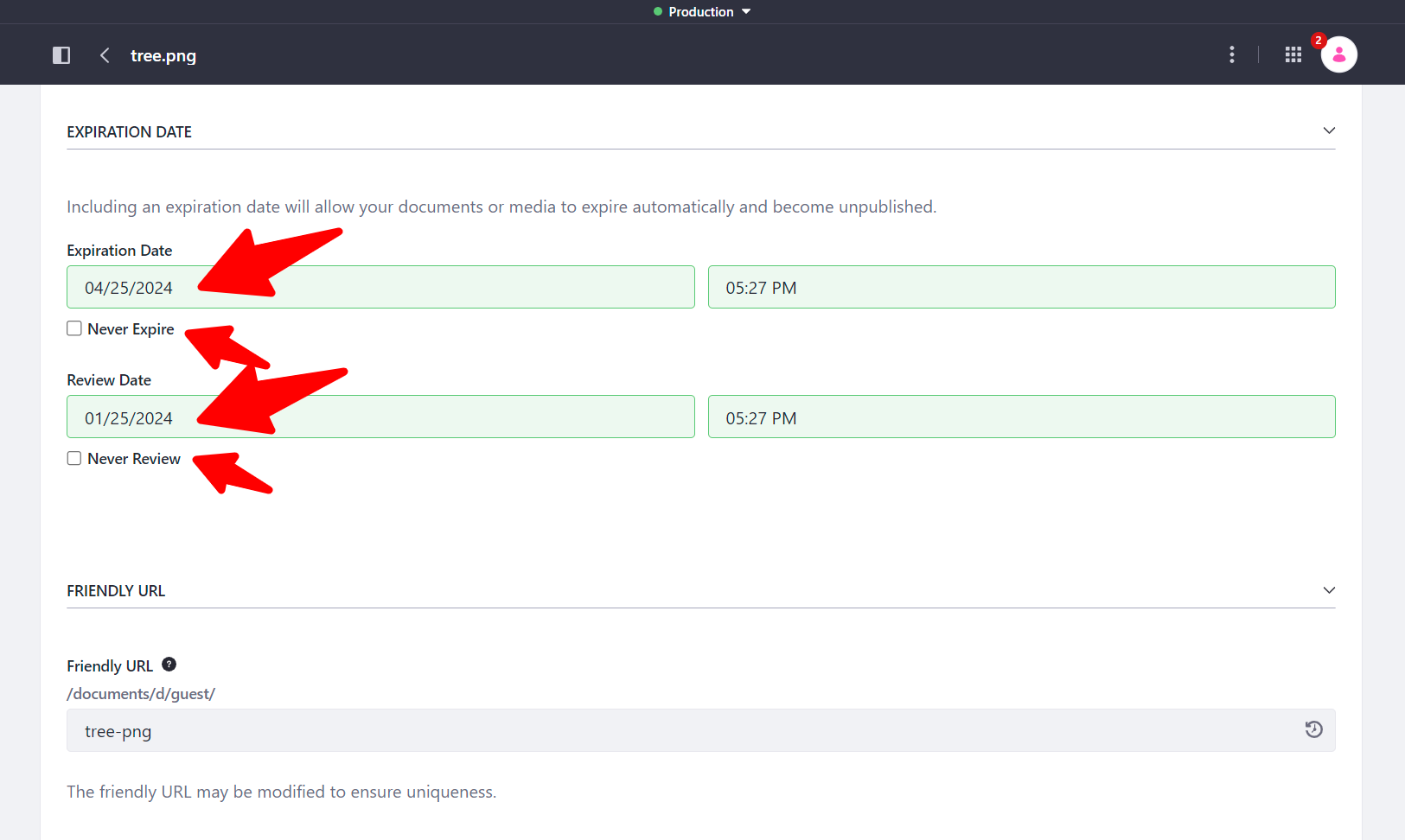
Liferay DXP 7.4 Feature #9: Collaborative Publications
Publications was a new feature introduced in Liferay DXP 7.3 to develop, track, and publish changes across your DXP instance. It allows you to create separate publications or groups of changes that can be published in a single block (or content project). However, one limitation of Publications in Liferay DXP 7.3 was that you could not collaborate with other content managers within the same Publication.
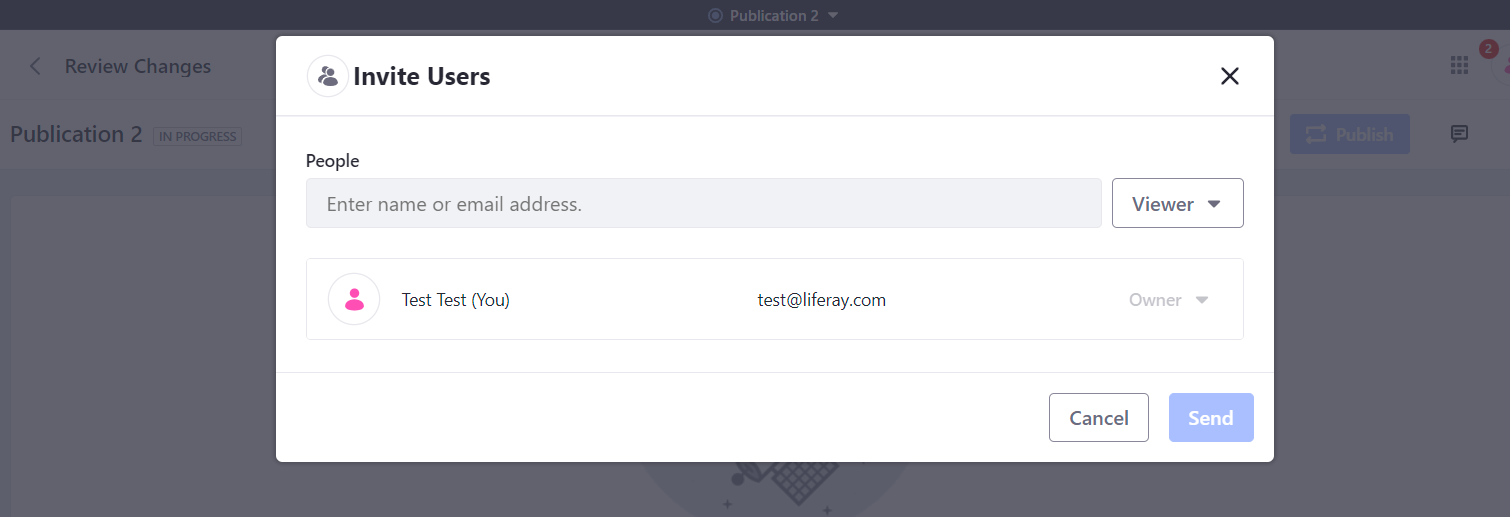
Starting with Liferay DXP 7.4, a Publication creator can now invite teammates to join a publication for viewing, editing, and publishing, including ongoing, scheduled, and published publications. Another new collaboration feature of Publications in Liferay DXP 7.4, is the ability to add comments to Publications, including replies to comments. This allows a content team to collaborate and manage their work within a Liferay Publication itself.
Liferay DXP 7.4 Feature #10: Related Items Providers
Related items collection providers show lists of related items (such as content articles, products, or blog posts) related to the main items being displayed. A typical use case is that you are displaying a product announcement (which may be a content article), and want to show related items such as the Product(s) associated with the product announcement or FAQs or a downloadable PDF of product features.
Liferay offers several choices of Related Items Providers:
- Related Assets – this provider displays items related to the main item being displayed; the related assets must be set up manually by the content curation team.
- Item Categories – this provider simply displays the categories of the main item
- Items with Categories in the Same Vocabularies – this provider displays items that have categories from the same vocabularies as the main item.
- Items with the Same Categories – this provider displays items that have the same as the main item. For example, if the main item has the categories “Product Announcement” and “Wiper Blades”, then this Related Items Provider may display other Product Announcements and/or Products that belong to the “Wiper Blades” category.
Liferay DXP 7.4 Feature #11: Page Audit For Page Optimization
The Page Audit tool is a new feature starting with Liferay DXP 7.4 that allows you to audit the performance, SEO, and accessibility aspects of your site pages. This tool leverages the Google PageSpeed Insights service and generates tailored recommendations for Liferay DXP. With the Page Audit tool, content authors can:
- Ensure that Pages are optimized for search engine indexing and visibility, resulting in improved search result rankings and better reach to the desired audience.
- Assess how well a given Page complies with best practices around accessibility, leading to enhanced usability and a superior experience for all users.
- Receive practical information to rectify any SEO and accessibility concerns that may impact the Page.
All in all, with the new Page Audit tool, you can check your page’s compliance with the best performance, accessibility, search engine metadata, and SEO practices.
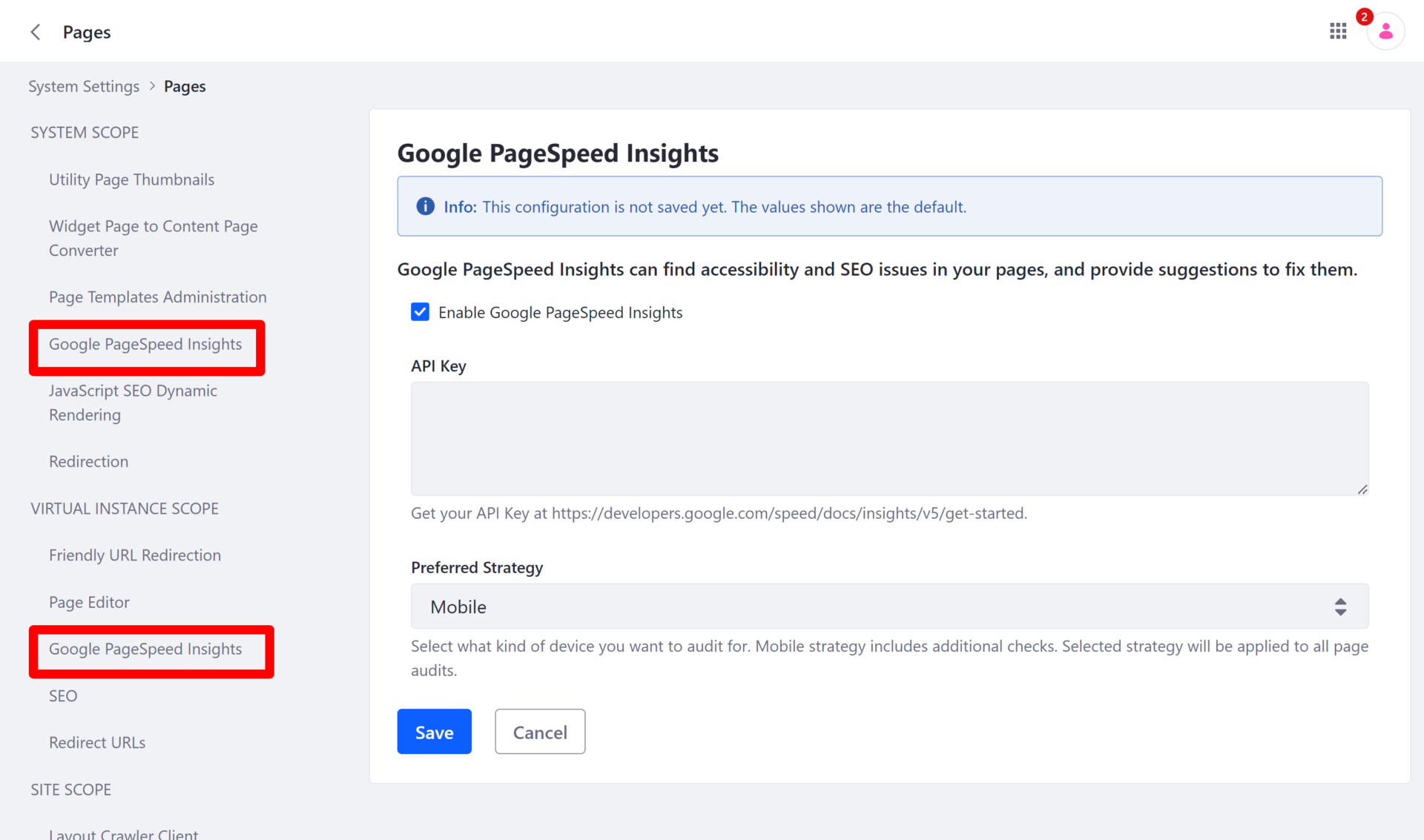
Important note: Since the Page Audit tool uses Google PageSpeed Insights and PageSpeed Insights needs to be able to access the page being audited, it only works with publicly accessible Pages. You cannot use the tool with Private Pages if they’re enabled for your Liferay system or for Pages that are not accessible by the Guest user.
Liferay DXP 7.4 Feature #12: Automated Translations And More
Liferay is often used in scenarios where your sites serve multilingual content, and Liferay has supported translating content into multiple languages since the early versions of Liferay. However, until Liferay DXP 7.4 came along there was one gap in this multilingual support—inline content within Content Pages could not be translated. With 7.4, page authors and editors can now translate the inline content of Content Pages (though you cannot translate widget content (which needs to be handled by the widget) or mapped fragment fields).
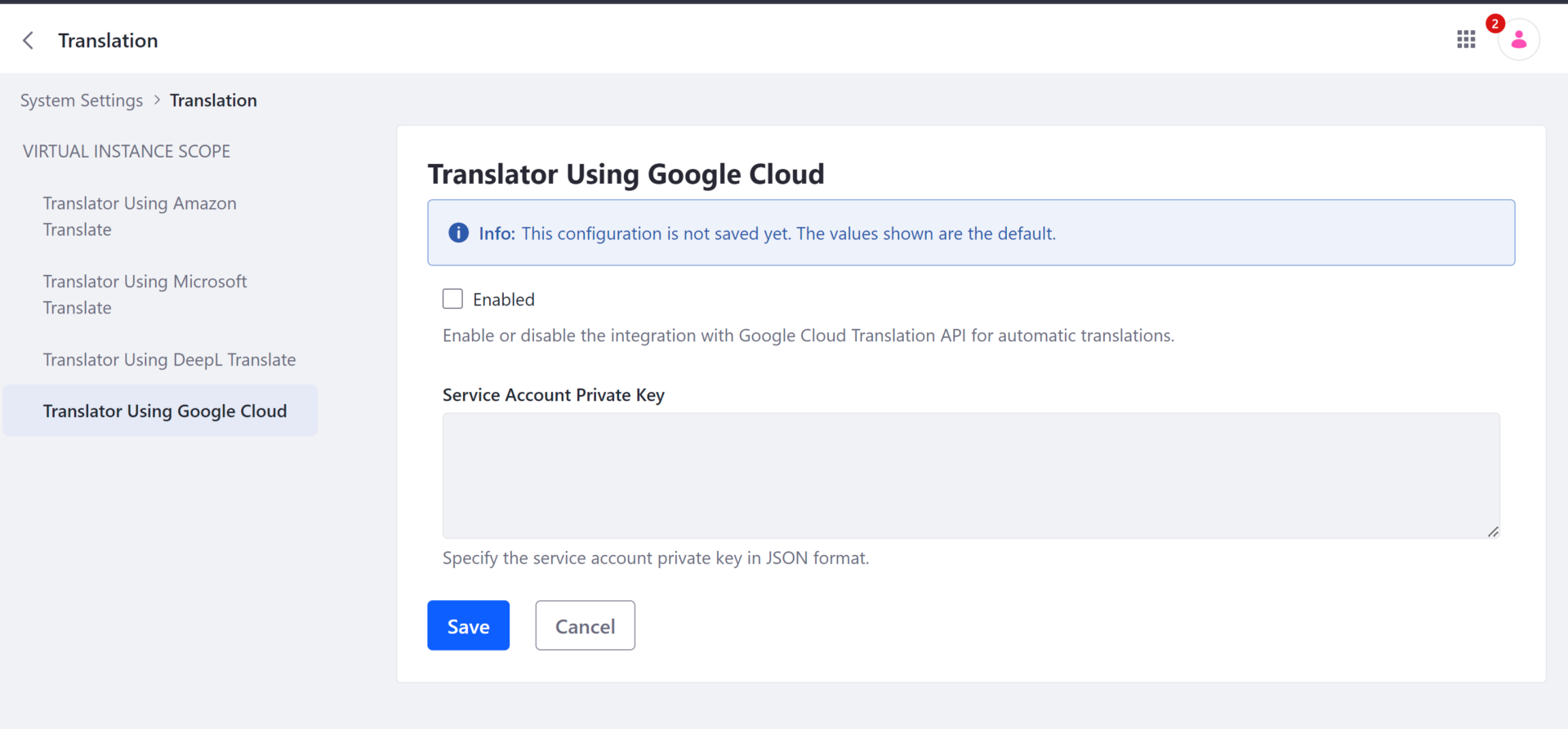
Additionally, Liferay now (7.4 U15+) supports Google Cloud Translation, Amazon Translate, and Microsoft Translator for automatic translations of Content Pages and Web Content Articles.
Liferay DXP 7.4 Feature #13: Collection Providers Are Now Reusable!
Collection Providers group items (such as content articles, products, and categories) into collections for display on your site pages. Liferay ships with some default Collection Providers such as Most Viewed Assets, Highest Rated Assets, and Recent Content. Additionally, Developers can use Collection Providers to create their own custom collections using the Info Framework. Beginning in Liferay DXP 7.4, Developers of Collection Providers can now support the ability to expose filtering configuration to page builders, site admins, etc., so that the same Collection Provider can be reused for different scenarios.
In Closing: Liferay DXP 7.4 New Features Rock!
So, that was my list of top new features and key enhancements in Liferay DXP 7.4. I have skipped over many other new Liferay DXP 7.4 features that might be relevant to your usage of Liferay. If you would like to learn more about Liferay DXP 7.4, have questions about any of these features, or would like to see Liferay DXP 7.4 in action, contact us for a personalized demo.

